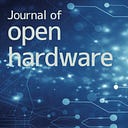Opening Your Science with Community Engagement
Caitlyn A. Hall, PhD, University of Arizona
Often when scientists work to ensure that their science is open, they limit their thinking to other experts. Scientists also often think globally — the big, catchy, broader impacts. This thinking ultimately neglects those who may be most impacted by their work: people at the local community level. If the work isn’t accessible (i.e., too jargon-filled and lacks discussion about the conceptual approach), many will struggle to understand, accept, apply, and build on the work. At worst, this excludes entire communities from using science to advocate for policy decisions that best fit their values. By excluding arguably the most populous stakeholder, decision-making is incomplete, inequitable, and unjust.
From another perspective, a solution that may be excellent for a community challenge may never be applied because the scientists limited their impact during the production by not considering and involving stakeholders in the broader public. However, following existing open science frameworks and guidance combined with collaborating and co-creating with a community (also called community science) approaches will lead to the largest possible impact and reach.
Fundamental and applied science has an enormous impact on society and policy. So, it makes sense to engage with communities and center communities’ lived experiences and priorities when opening one’s science. I’ve been asked variations of “how-what-when-where-why?” for working with communities on science research, particularly when working on applied research that could lead to policy. Many are unsure of where to start. Here are a few things I think about when developing my approach to working with communities when considering open science.
‘Why do I want to engage with this community?’
Building sincere relationships and partnerships with communities are the most important thing when working with communities on science and policy work. But, this means really thinking about why you are motivated to work with them — why are you motivated to take the extra time to involve communities? It takes a lot of work to build relationships that can lead to transformative action because you have to make genuine connections. As such, you must come into the relationship to build lasting partnerships that serve the community’s goals rather than coming in with an exploitative mindset of what you can get out of it. Exploitation and extraction can be in terms of not just tangible resources but also time and knowledge. As such, the research process must be open and accessible to the community, too.
‘How can I start building community engagement relationships?’
Dr Ben Pauli told me a story of how he went to communities in Flint with the mindset that he had so many resources to offer because he worked at a university. He further explained that it was his ego that was leading his motivation and he was shocked when he was told that they needed help knocking on doors — nothing that could be found in the structure of his university. As such, it’s important to bring your humility, listen to what they need, and empathize with communities and their perspectives because they are the experts in their own community (including its challenges).
‘How can I work with this community on science and policy?’
Communities are major stakeholders of all research types. To commit to open science and community-engaged science, all aspects of the research process must engage the community like any other collaborator: working ‘with’ the community, not ‘in’ or ‘on’. This does not mean that the community has to become experts in science, but they must be able to understand the results. Their perspective is integral to drawing and sharing conclusions, so you accurately communicate potential future impacts.
Now that you’ve thought about important questions before even approaching the community, several resources will walk you through developing your open science and community science. Below are a few to get you started:
- Engaging Communities as Experts throughout the Assessment Process: Addresses the importance and best practices in engaging communities throughout a project’s process: from design to implementation to sharing.
- Thriving Earth Exchange: Resources by an organization committed to equitable and just community science connects geoscientists and environmental scientists with communities looking for volunteer scientists to consult on current challenges they face.
- CARE (collective benefit, authority to control, responsibility, ethics) Principles for Data Governance: Provides guidance that centers justice for historically oppressed communities and their knowledge and data, which is critical to reducing community exploitation in community engagement.
- FAIR (findability, accessibility, interoperability, reusability) Principles: present standards for open data that can be applied towards all aspects of the project process, including conceptual approach and sharing.
